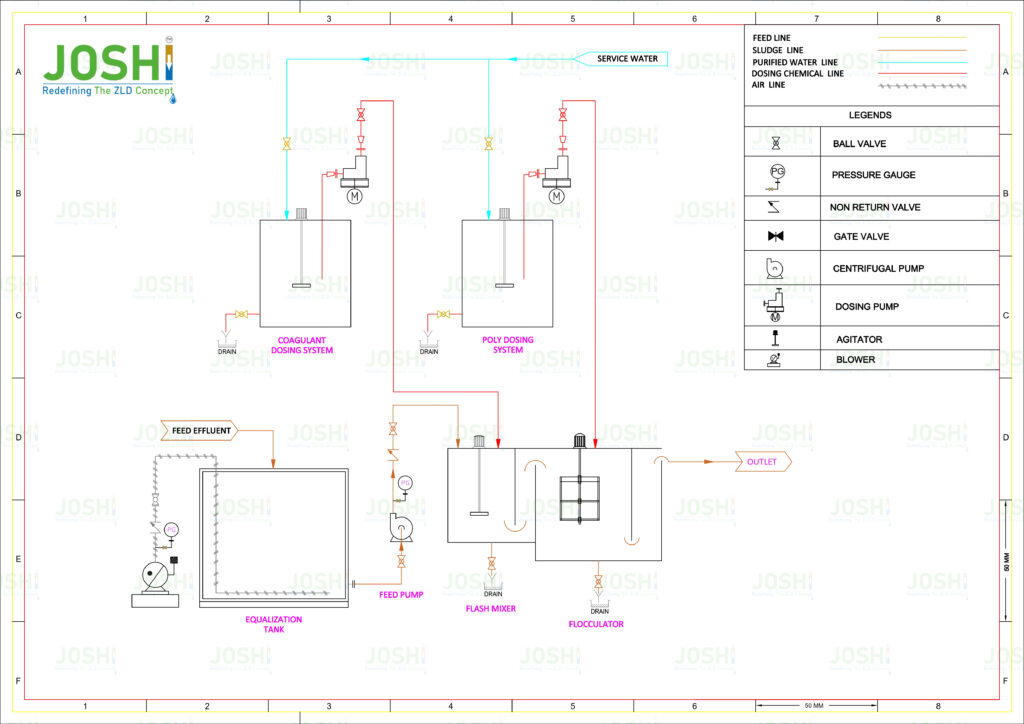Flocculation - Flocculator fitted with a slow speed mixer
Flocculation is a process in wastewater treatment that follows coagulation. It involves the gentle stirring or mixing of the water or wastewater to promote the formation of larger, aggregate particles called flocs.
Process Steps
Mixing: The coagulate water or wastewater is gently mix or agitate to promote the collision and contact between the destabilize particles. The mixing can be achieve using mechanical stirrers, paddles, or by creating controll turbulence.
Particle Collision and Attachment: As the particles collide and interact, they come into contact and adhere to each other, forming small aggregates or micro flocs. This process is facilitate by the neutralize surface charges and the presence of polymers or flocculants, which can be added to aid in flocculation.
Floc Growth: The micro flocs continue to collide and aggregate, gradually growing in size to form larger flocs. This growth occurs as more particles adhere to the existing flocs, forming a network of interconnecte particles.
Floc Maturation: The flocculation process is allow to continue for a specific duration to ensure the optimal growth and maturation of the flocs. This duration depends on various factors, such as the characteristics of the wastewater, mixing intensity, and the dosage of flocculants.
Settling or Filtration: Once the flocs have reach a sufficient size and strength, the water or wastewater is directed to sedimentation basins or filtration units. The larger and denser flocs settle more readily during sedimentation or can be more effectively remove through filtration processes. The coagulant’s positive ions neutralize the negative charges on the particles, reducing the electrostatic repulsion between them. As a result, the destabilize particles come closer together and begin to aggregate. This process is often referre to as “sweep flocculation.
Significance
Flocculation enhances the settling or filtration properties of the suspend particles, allowing them to be more effectively remove during sedimentation, flotation, or filtration processes, resulting in clearer and cleaner water or wastewater effluent.
After coagulation, where a coagulant is add to neutralize the charges on suspend particles, flocculation helps bring these destabilize particles together to form larger, heavier flocs.
Cascade aerators are also use to remove volatile gases, such as carbon dioxide and hydrogen sulfide, from the water. These gases can contribute to unpleasant odors and can be harmful to aquatic life if present in excessive amounts. By exposing the water to air, cascade aerators facilitate the release of these gases, improving water quality.
Targeted Impurities
- Suspend Particles
- Colloids
- Organic Matter






